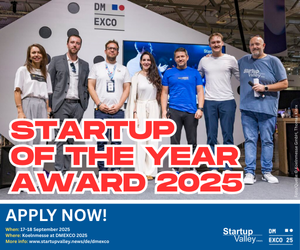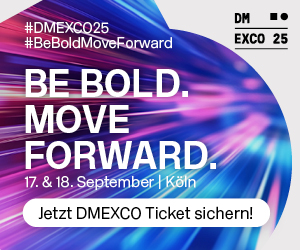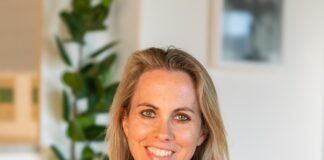PitchBob AI pitch deck generator
Please introduce yourself and your startup PitchBob to our readers!
Hello! My name is Dima Maslennikov, and I am a seasoned entrepreneur and corporate innovation consultant based in Tel Aviv, Israel. I also speak at events dedicated to startup culture and innovation. This year, we launched the Corporate Innovation Academy in Israel. My main project right now is PitchBob.
I am the founder of PitchBob.io, where we help entrepreneurs create their pitch decks to maximize impact and secure investments. PitchBob asks you about 40 questions and generates an entire pitch suite for you. This includes a pitch deck, executive summary, startup idea canvas, elevator pitch text, and even a letter to potential investors. Our Chat GPT model provides personalized suggestions and recommendations to help you refine your message and convey your startup’s unique value proposition.
PitchBob provides the tools and resources you need to articulate your startup’s mission, vision, business strategy, and financial metrics that all investors need to see. Our company aims to empower aspiring entrepreneurs and innovators worldwide. So far, we have helped over 5000 entrepreneurs with their pitch decks, and I know for a fact that some of them have already received investments.
How did you get the idea of PitchBob?
My journey began over a decade ago when I ventured into the startup ecosystem. Throughout my career, I witnessed entrepreneurs’ challenges in articulating their ideas and securing investments. Determined to make a difference, I decided to simplify the startup presentation process.
In 2016, I conducted a workshop on Lean Startup and Customer Development methodologies. It was during this event that I had a pivotal realization. I noticed the struggle many participants experienced in formulating and structuring their ideas effectively. Inspired by this observation, I had an idea: a pitch deck template that would serve as a guiding framework for entrepreneurs.
With this vision in mind, I created the MVP of PitchBob.io. The pitch deck template was designed to streamline the presentation creation process by providing entrepreneurs with a structured framework. All they had to do was fill in the missing details with their unique business concepts. The feedback from workshop participants was overwhelmingly positive, validating the immense value of PitchBob’s concept.
Why did you decide to start with PitchBob?
For the past 12 years, I have been involved with startups. I have created my own startups, with three successful exits and numerous ideas that didn’t take off. I have also invested in other startups and served as an investment advisor for both corporations and startup founders.
Based on my experience, I understand how challenging it can be to formulate the idea of a startup and package it into the first pitch deck that effectively communicates with the target audience. I know the mistakes I made, as well as the mistakes that startups whose investment presentations I receive make. I am also aware of the errors that graduates of acceleration programs make when seeking investments.
Through developing PitchBob, I aim to transfer all the accumulated entrepreneurial experience and practical expertise into a scalable product that helps entrepreneurs create effective pitch decks and sales decks. I believe this product will save creators a significant amount of effort, time, money, and energy.
What is the vision behind PitchBob?
There are 472 million entrepreneurs in the world. According to statistics, approximately 50 million startups are created each year. Out of these startups, 1.4 million enterprises are technology-related. Every day, 137,000 startups are created worldwide. We are building PitchBob to help at least 10% of entrepreneurs articulate their business ideas properly and easy to express.
How difficult was the start and which challenges you had to overcome?
During the first few years, our main challenges were technological disadvantages and development costs. Prior to the emergence of generative AI and chat GPT, the complexity and cost of their implementation hindered our product goals and plans. However, since 2023, things have become significantly easier. Our startup has received a boost in development and has created more value for users.
With that technological advancements, we are now capable of proposing even more sophisticated services, such as:
PitchDeck Coach: an AI-powered tool that simulates real-world interactions with analysts and venture capitalists. It does this by asking you 300+ questions that real VCs might ask in real life.
PitchBob’s Feedback: a service that analyzes your pitch deck by 11 parameters and suggests improvements.
10 design templates capable of automatically packing pitch deck content and making it visually appealing.
Thanks to the rise of generative AI technologies, developing each of these functions became much less time and cost-consuming. This represented a significant value breakthrough for our service.
Who is your target audience?
We have two primary target audiences. The first consists of wantrepreneurs, aspiring entrepreneurs, and early-stage startup founders who wish to create or improve their presentation and sales materials for their startup. The second consists of corporations and enterprises interested in developing the internal innovation potential of their employees.
What is the USP of your startup?
According to recent research, investors and business owners were 3 times more likely to invest after reading a pitch deck created by GPT-4 than after reading one created by a human. PitchBob offers an AI-powered solution to help entrepreneurs create a strong pitch deck, increasing their chances of securing investments and gaining traction for their business.
With PitchBob, users can rebuild and enhance their pitch deck using AI technology to better connect with potential investors and partners. The AI provides personalized suggestions and insights to help users tailor their message to specific audiences and refine their pitch. Entrepreneurs can significantly increase their chances of success in fundraising and business development by trusting in the power of PitchBob to improve their pitch deck.
Can you describe your typical workday ?
In the morning, I take my kids to school and then start my day with some coffee and language lessons. I’m learning Hebrew and German to better communicate with different people in my network. Then, I check our metrics to see how we’re doing and have a daily check-in with my team to go over our priorities for the day. The rest of my day is typically spent working on product development and business development initiatives. I make sure to balance my work with family time in the evenings.
Where do you see yourself and your startup PitchBob in five years?
In five years, I see PitchBob as one of the key players in the startup ecosystem, having been acquired by a major VC, analytics, investment platform, or enterprise like Salesforce. We aim to empower millions of aspiring entrepreneurs and innovators worldwide by providing them with a cost-effective solution to create effective pitch decks and sales materials. By leveraging AI technology and chat GPT models, we want to enable entrepreneurs to communicate their startup’s unique value proposition with clarity and conviction. Our long-term vision is to revolutionize the way startups present themselves and secure investments, ultimately helping to accelerate innovation and drive economic growth worldwide.
What 3 tips would you give to founders?
It should come as no surprise that my primary advice to founders concerns pitch decks. As someone who sees hundreds of ideas and dozens of presentations daily, I can offer one crucial piece of advice: focus primarily on the structure and content. While creating a beautiful presentation may be tempting, substance is ultimately more important than packaging. I would like to invoke the Pareto principle and emphasize that 80% of the effect comes from the substance, while only 20% comes from design. Unfortunately, the efforts of founders often have the reverse proportion.
Thank you Dima Maslennikov for the Interview
Statements of the author and the interviewee do not necessarily represent the editors and the publisher opinion again.




















